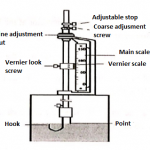Intended and Unintended Consequences of US Border Control Enforcement
Intended and Unintended Consequences of US Border Control Enforcement
Unintended Consequences
- Increased Spatial Distribution of Illegal Entry Attempts
Concentrated border patrol strategy used as part of US immigration control policy has caused spatial distribution of illegal entry attempts to more areas. FY 1994 apprehension statistics show that due to installation of modern detection equipment, apprehensions have shifted from California and Texas towards Arizona.
- Higher Rate of Permanent Settlement of Illegal Immigrants
Concentrated border patrol caused the amounts charged by people smugglers to go high in addition to increased risks associated with crossing the border. This in risk and cost of return compelled majority of existing illegal immigrants to plan permanent settlement in the United States and avoid going back. Hence the rate of permanent settlement went higher.
- Changes in Causes of Deaths among Illegal Migrants
Concentrated border patrol strategy has caused illegal immigrants to try alternative ways to enter the borders where they face more harsh environmental conditions and tougher challenges to pass through. Although increased physical risk at some location was intended by the US immigration policies but the new causes of deaths were not intended.
Intended Consequences
- Increased physical risk of illegal entry
Concentrated border patrol strategy has caused physical risk associated with illegal entry because alternative ways to enter require more traveling, more challenges to face, and harsher environmental conditions to work against.
- Increased Cost of Illegal Entry
These increased physical risks have justified the people smugglers to charge higher fees for helping illegal entrants. This was an intended consequence of the immigration policy to make it difficult for illegal entrants to afford the illegal entry.
- Decreased apprehensions in some area
The areas where modern equipment has been deployed to control illegal entry into the US, has shown decreased apprehensions thus showing that illegal entry has decreased in those areas as intended as a result of concentrated border patrol strategy.





